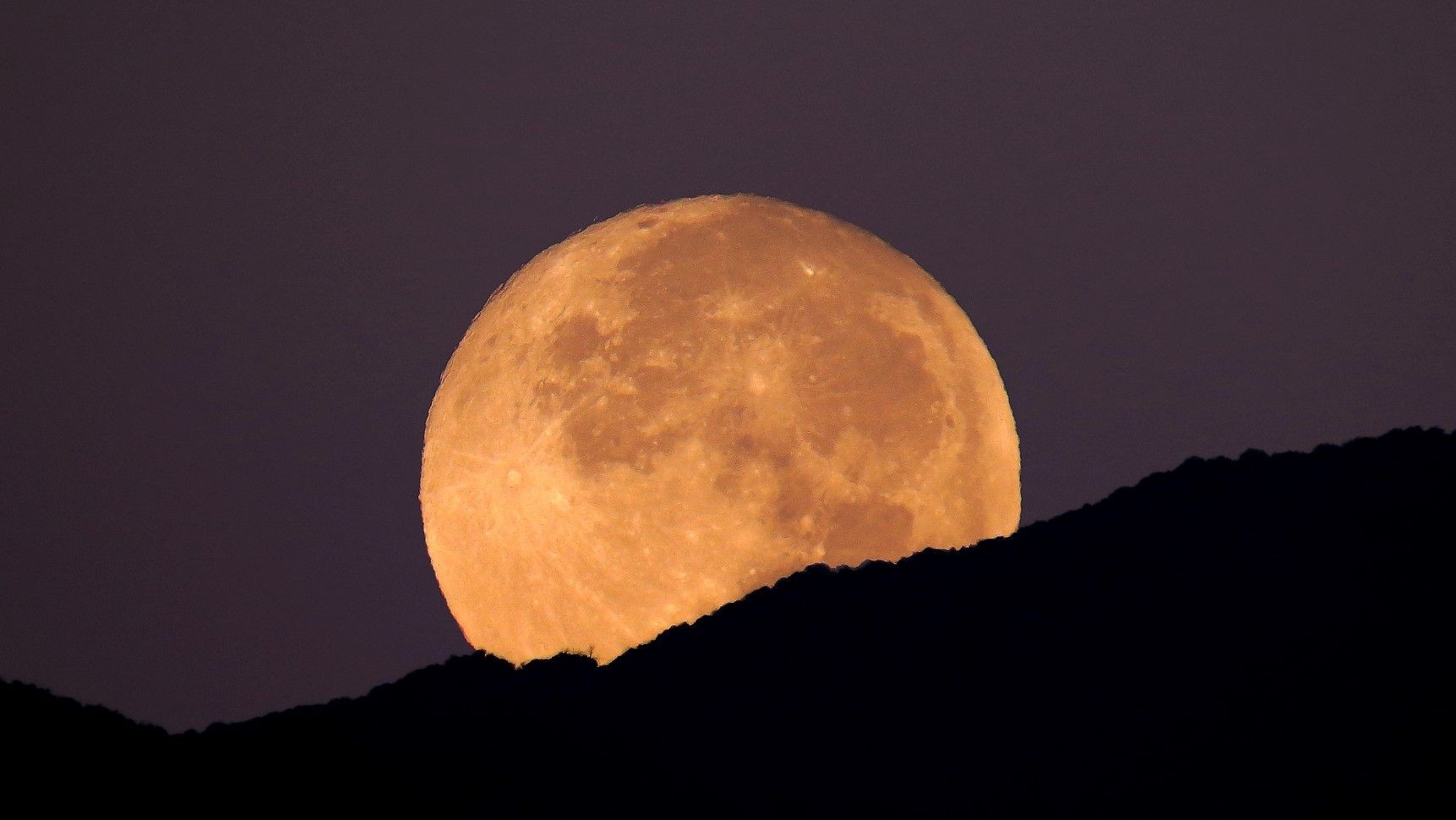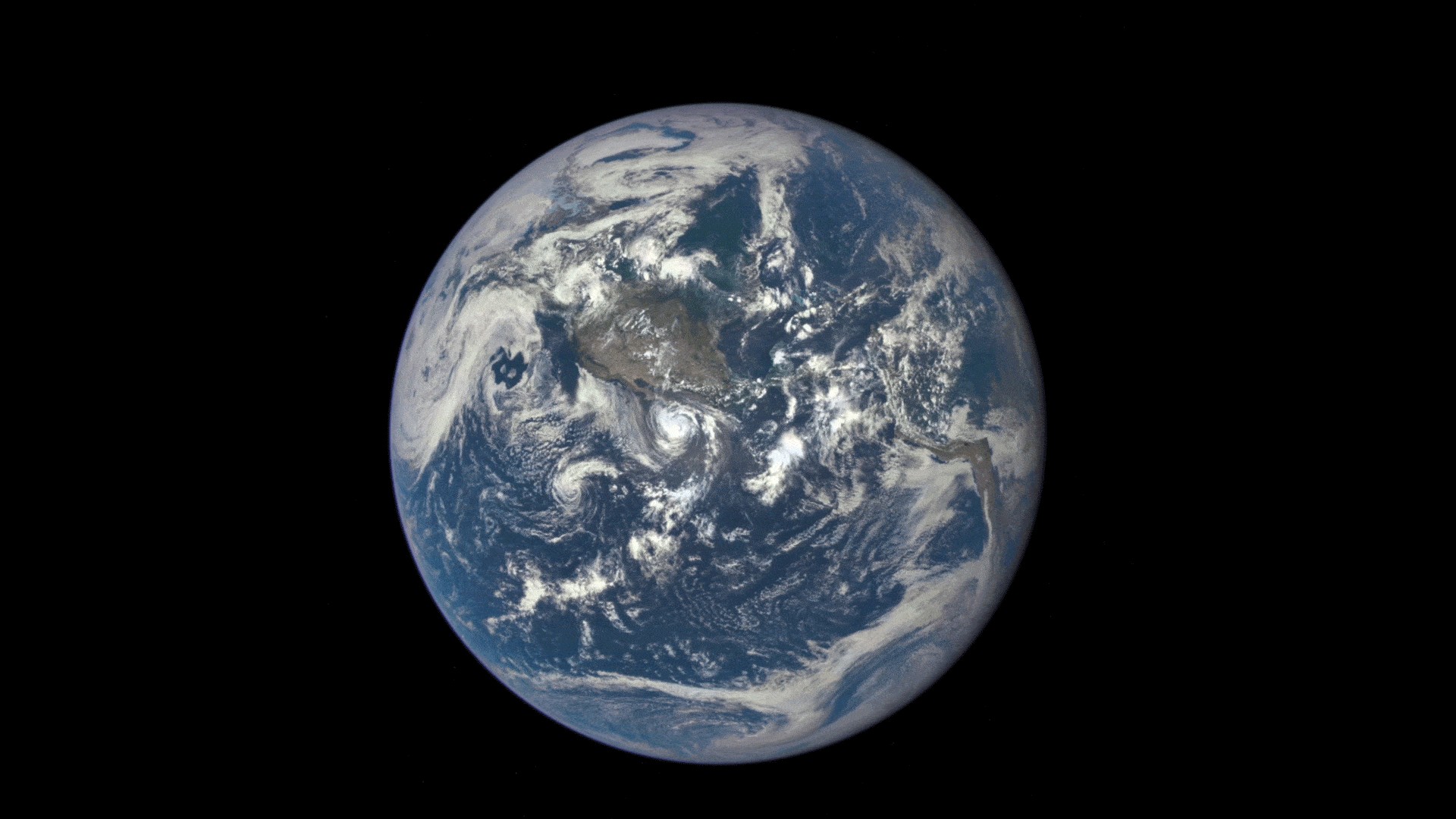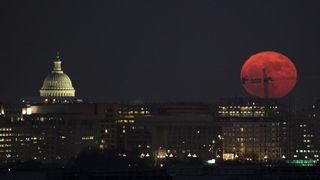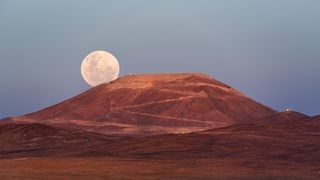The moon, Earth’s constant companion, illuminates our night sky and has captivated humanity for millennia. Often appearing vast and bright, especially on a full moon night, it’s natural to wonder about its true size in relation to our own planet. While it may seem imposing from our terrestrial viewpoint, the reality is that Earth dwarfs its lunar neighbor. Let’s delve into a detailed comparison of Earth and the moon to truly understand their size disparity and explore fascinating related aspects.
The moon’s dimensions are considerable in their own right, but when placed alongside Earth, the contrast becomes striking. The moon’s mean radius measures 1,079.6 miles (1,737.5 kilometers), and its mean diameter spans 2,159.2 miles (3,475 km). In comparison, Earth boasts a significantly larger mean radius and diameter. NASA data confirms that the moon’s width is less than one-third of Earth’s, emphasizing the substantial size difference between these two celestial bodies. Circling the moon at its equator would mean traveling 6,783.5 miles (10,917 km).
Key Size Statistics: Earth vs. Moon
To grasp the scale of difference, let’s examine some key statistics side-by-side:
-
Radius:
- Moon: 1,079.6 miles (1,737.5 km)
- Earth: Approximately 3,959 miles (6,371 km)
-
Diameter:
- Moon: 2,159.2 miles (3,475 km)
- Earth: Approximately 7,918 miles (12,742 km)
-
Surface Area:
- Moon: 14.6 million square miles (38 million square km)
- Earth: Approximately 197 million square miles (510 million square km)
-
Mass:
- Moon: 7.35 x 10^22 kg
- Earth: Approximately 5.97 x 10^24 kg
-
Density:
- Moon: 3.34 grams per cubic centimeter (3.34 g/cm3)
- Earth: Approximately 5.51 grams per cubic centimeter (5.51 g/cm3)
These figures clearly illustrate the Earth’s dominance in size and mass. The moon, while substantial, is considerably smaller and less dense than our planet.
Earth and Moon Size Ratio: Putting it in Perspective
Numerically, the moon is a little more than one-quarter (roughly 27%) the size of Earth. This 1:4 ratio is notably larger than the size ratios seen between most other planets and their moons in our solar system. To visualize this ratio, NASA offers a helpful analogy: “If Earth were the size of a nickel, the moon would be about as big as a coffee bean.” This simple comparison effectively captures the proportional size difference.
Another way to comprehend the moon’s size is by comparing its surface area to a familiar landmass. The moon’s total surface area is about 14.6 million square miles (38 million square km). Interestingly, this is less than the entire continent of Asia, which covers approximately 17.2 million square miles (44.5 million square km). Imagine that: the entire surface of the moon is smaller than the continent of Asia on Earth.
This relatively large size ratio between Earth and the moon is unique within our solar system and plays a significant role in various phenomena, including tides on Earth.
Gravity and Density Differences
Beyond just physical dimensions, Earth and the moon also differ significantly in mass, density, and consequently, gravity. The moon’s mass is about 1.2% of Earth’s mass, meaning Earth is approximately 81 times more massive than the moon. The moon’s density is also lower, about 60% of Earth’s density.
This difference in mass and density directly affects gravity. The moon’s gravitational force is only about 16.6% of Earth’s gravity. This has some fascinating implications. For instance, a person weighing 100 pounds on Earth would only weigh about 16.6 pounds on the moon. Imagine the implications for athletic events! A person capable of a 10-foot vertical jump on Earth could theoretically leap nearly 60 feet on the moon due to the reduced gravity.
NASA’s Gravity Recovery and Interior Laboratory (GRAIL) mission in 2012 meticulously mapped the moon’s gravity, revealing variations across its surface linked to features like craters and mountains. This detailed gravity map further enhances our understanding of the moon’s composition and internal structure.
Moon’s Size Compared to Other Moons in the Solar System
While Earth’s moon is dwarfed by Earth itself, it holds a prominent position when compared to other moons in our solar system. It is the fifth-largest moon overall and, notably, the largest moon relative to the size of its planet. Jupiter’s moon Ganymede reigns as the largest moon in the solar system, followed by Saturn’s Titan.
Here’s a list of the 10 largest moons in our solar system to provide further context:
| Rank | Moon | Equatorial Radius | Parent Planet |
|---|---|---|---|
| 1 | Ganymede | 1,635 miles (2,631 km) | Jupiter |
| 2 | Titan | 1,600 miles (2,575 km) | Saturn |
| 3 | Callisto | 1,497 miles (2,410.3 km) | Jupiter |
| 4 | Io | 1,131.7 miles (1,821.6 km) | Jupiter |
| 5 | The Moon | 1,079.6 miles (1,737.5 km) | Earth |
| 6 | Europa | 969.84 miles (1,560.8 km) | Jupiter |
| 7 | Triton | 840.96 miles (1,353.4 km) | Neptune |
| 8 | Titania | 490.19 miles (788.9 km) | Uranus |
| 9 | Rhea | 474.91 miles (764.3 km) | Saturn |
| 10 | Oberon | 473.11 miles (761.4 km) | Uranus |




As you can see, while Ganymede and Titan are significantly larger, Earth’s moon still ranks within the top tier of moons in our solar system, particularly when considering its size relative to its host planet.
The Supermoon Phenomenon
Have you ever noticed the moon appearing exceptionally large and bright on certain nights? This is often due to a phenomenon known as a supermoon. The moon’s orbit around Earth is not perfectly circular; it’s elliptical. This means there are points in its orbit where the moon is closer to Earth (perigee) and farther away (apogee).
When a full moon coincides with the moon being at or near its perigee, we experience a supermoon. At perigee, the moon can be approximately 226,000 miles (363,300 km) from Earth. During a supermoon, the moon can appear up to 14 percent larger and 30 percent brighter than an average full moon.
The term “supermoon” was popularized by astrologer Richard Nolle in 1979, although astronomers refer to it as a perigee-syzygy moon, “syzygy” denoting the alignment of the Sun, Earth, and Moon. Supermoons occur roughly every 414 days, although some years may see multiple occurrences. Despite the hype, the difference in size and brightness isn’t always dramatically noticeable to the casual observer, especially in brightly lit urban environments or under cloudy skies.
The Moon Illusion: Why Does the Moon Look Bigger at the Horizon?
Another intriguing lunar size perception is the “moon illusion.” Often, the moon appears much larger when it is rising or setting near the horizon compared to when it’s high in the sky. This is an optical illusion that has puzzled observers since ancient times, and while several theories exist, there’s no single universally accepted explanation.
One prominent theory suggests that our brains interpret the horizon moon as being further away because we see it behind terrestrial objects like trees and buildings. Since it appears the same size as when it’s overhead but seems further away, our brain compensates by perceiving it as larger. Another hypothesis involves comparing the moon to objects on the horizon, making it seem larger by comparison, whereas, in the vastness of the sky, it lacks such points of reference and appears smaller.
To test if it’s indeed an illusion, you can use a simple trick: hold your thumb up at arm’s length and compare it to the size of the moon on the horizon. Later, when the moon is high in the sky, repeat the comparison. You’ll find that the moon’s size relative to your thumbnail remains consistent, demonstrating that the perceived size change at the horizon is indeed an illusion created by our perception.
Conclusion
In conclusion, while the moon is a prominent and captivating celestial body in our sky, it is significantly smaller than Earth. The moon’s diameter is roughly one-quarter that of Earth, and its mass is a tiny fraction. However, in the context of the solar system’s moons, Earth’s moon is remarkably large, especially in proportion to its planet. Understanding the size difference between Earth and the moon not only provides a clearer picture of our cosmic neighborhood but also enriches our appreciation for the unique characteristics of both these celestial bodies and the fascinating illusions our perception can create when we gaze upon them.